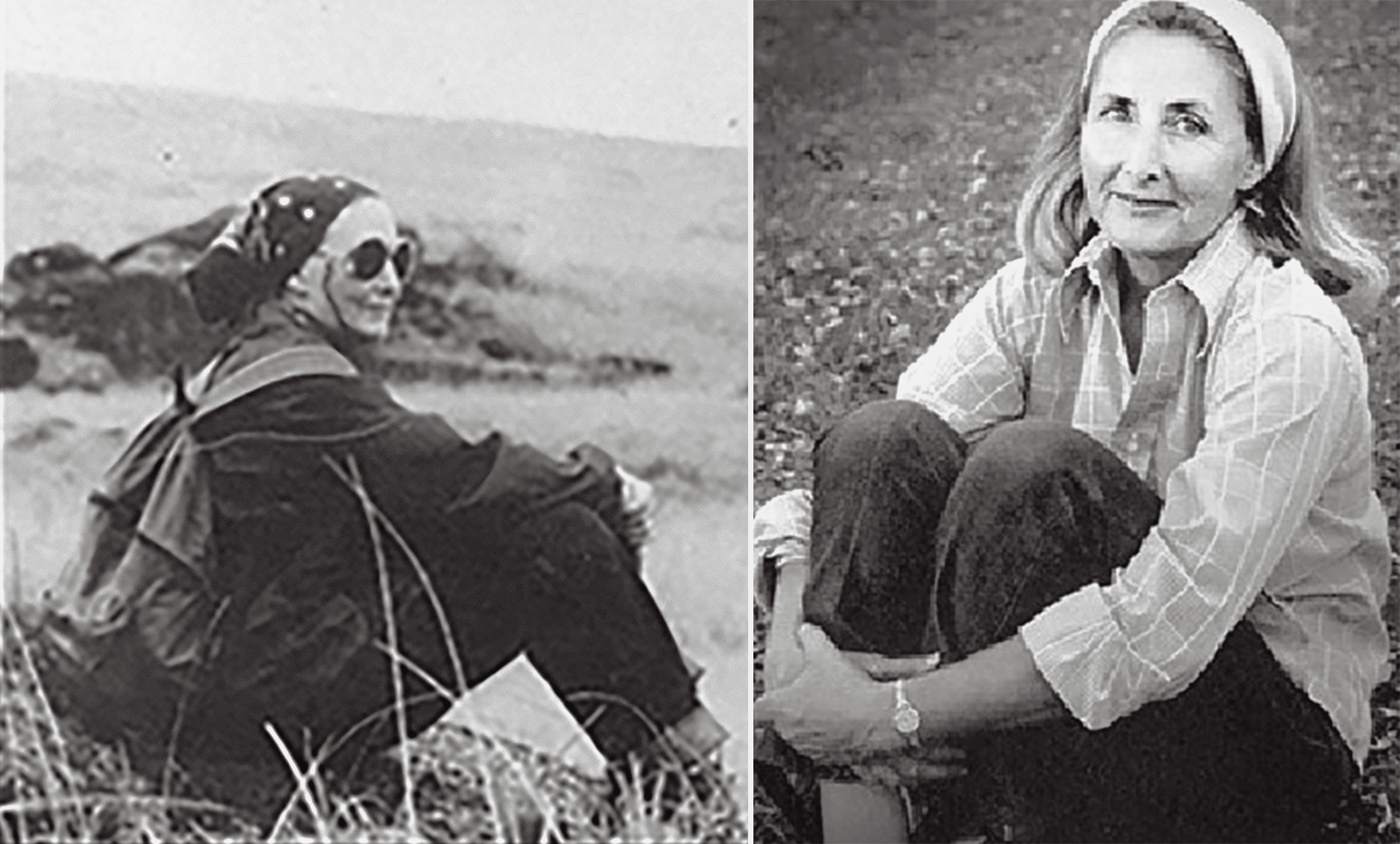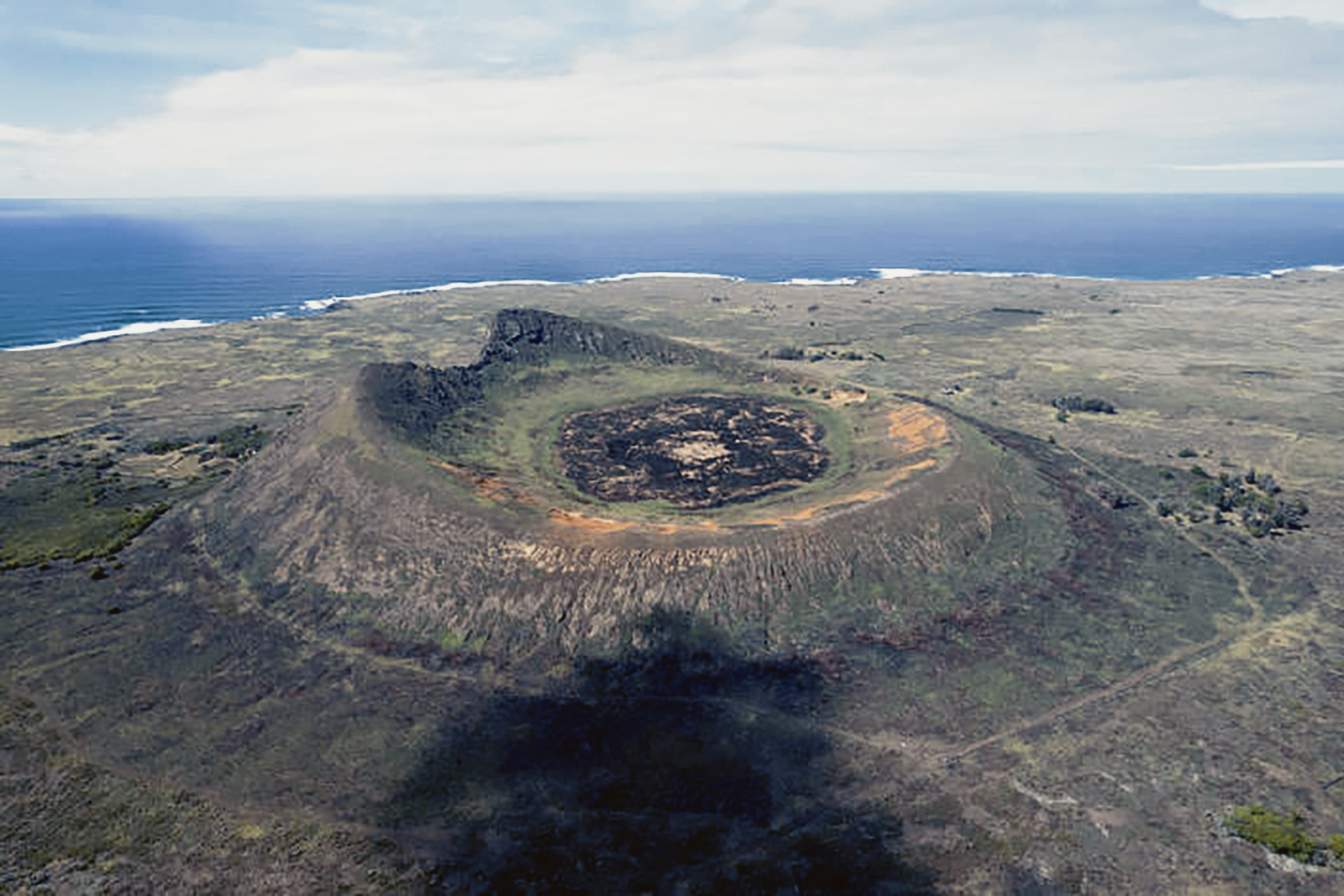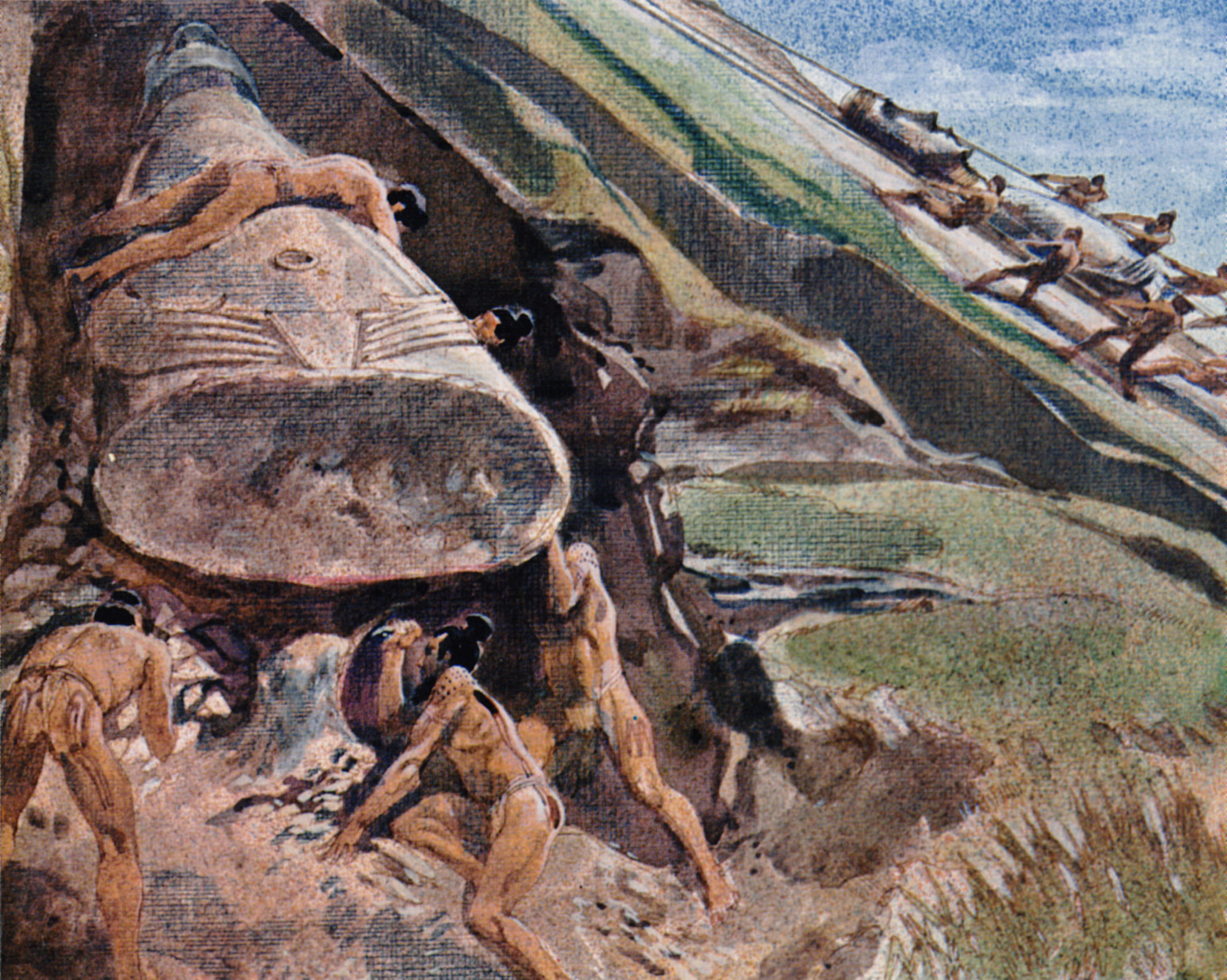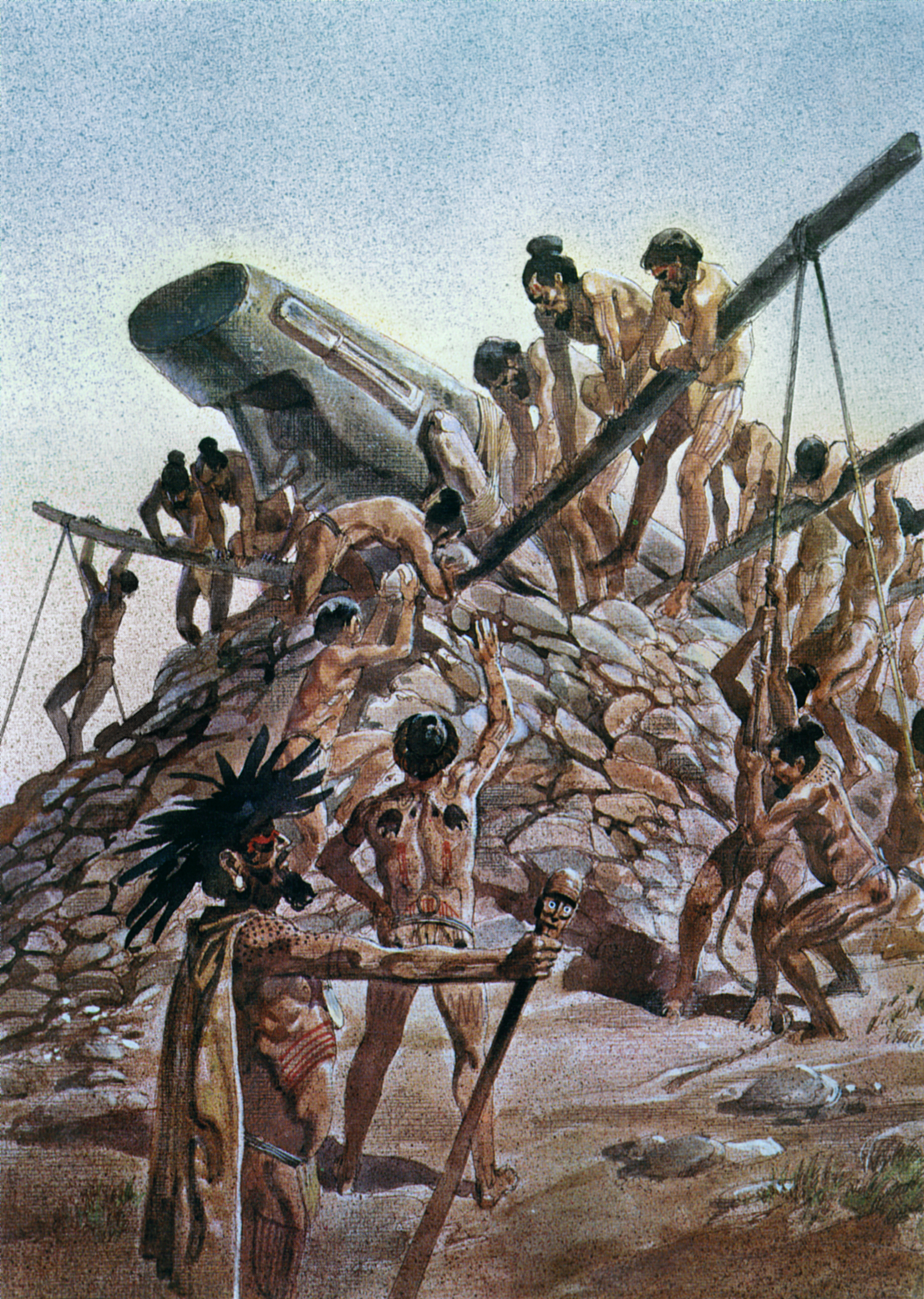



Stories concerning the collapse of past civilizations due to the overuse of natural resources and overpopulation are well-known. From the early civilizations in the 'fertile crescent' of the Near East to small island nations, history tells us how man has trashed his land and, in most cases, left for greener pastures when desert replaced cropland and orchards. But on Easter Island, once the trees were cut down, the islanders no longer could build a canoe and sail onward, looking for another island in the sea. They were trapped in a degraded environment, and then further impacted by European explorers who brought disease and, in many cases, outright death. Easter island is so small that it can be seen in its entirety from its highest mountain; whomever cut down the last tree on the island had to know that it WAS the last tree. But he cut it down anyway. The history of Rapa Nui was played out on a small island and it serves well as a metaphor for our earth today. It is hard to comprehend a mentality that ignores such things as bulldozing rainforests in the Amazon - for short-term gain, and seas that are being over-harvested. Mankind has learned very little from the past. The island called Easter has become a metaphor for our time. Only by understanding the past and altering present behavior can "earth island" avoid the dreadful fate of Rapa Nui.
But who were the people of Easter Island? Where did they come from? Just as the statues remain silent, so too does their Rongo Rongo script which no one can now read. All accounts of their origins can only be revealed by spoken legends. Because these remain scant, other theories have emerged, in particular those of Thor Heyerdahl who proposed that the people who built the statues were Peruvian Incas, due to a similarity between Rapa Nui and Incan stonework, as is found at the dressed stone sea wall of an ahu at Vinapu.
Heyerdahl's epic voyage in 1947, on the balsa-wood raft Kon Tiki, to the island of Angatau in the Tuamotu archipelago, northeast of Tahiti, many miles west of Rapa Nui, confirms the possibility of this, although a major flaw in the theory is the complete absence of weaving skills on Easter Island, as well as the fine pressure-flaking of stone tools, metal work, and pottery, things the Incas excelled in.

Arriving by sea-faring canoe as early as 450 years AD, these intrepid voyagers, in all probability, arrived from the Marquesas Islands, via Mangareva, a navigational and physical feat described within living memory. The seas between Polynesia and the south-eastern end of Asia are filled with islands, beginning with the rich island worlds of the Philippines, Indonesia and New Guinea where the seagoing canoes and deep-sea navigational skills were developed, and extending across Melanesia and Micronesia to that vast island realm so aptly named Polynesia. As populations grew, a continuous distribution of islands extending eastward encouraged, or perhaps forced, generations of canoe voyagers to sail farther and farther into the ocean by rewarding them with island after island to colonize. Conversely, the empty seas off South America offered little inducement for Inca colonisation, despite their fine sailing rafts, to cross thousands of miles of open ocean. The latest analysis of skeletal material shows a strong link not only between the mtDNA of the Marquesas, Mangareva, and Easter Island, but also to all other Polynesians.
Polynesian anthropology links are also provided - the first settlers arrived with the distinctive Blue Legged Asian chickens, found in the Pacific, as well as the knowledge of how to make tapa from the bark of the mulberry tree, a plant indigenous to Burma. Indeed, all Polynesians made barkcloth, their only fabric. They made rope from the hau tree.
There followed one thousand four hundred years of isolation, during which the culture developed and the population divided into a number of clans that populated the various parts of Rapa Nui.
Thus began the culture identified with the great Moai stone statues. The rival clans or tribes quarried the volcanic cliffs of Rano Raraku's crater on the southeast side of the island, carving moai to adorn their shrines, called ahu.
The cult of the moai occupied increasingly large labor forces to carve stone, move statues and build the ahu around Easter island. Rivalry among tribes intensified. According to widely accepted theories, a major motivation was the concept of mana - a mystical combination of power, prestige and prosperity. In a belief system that included ancestor worship, the moai represented a clan's most revered forebearers who were believed to bestow ‘mana’ on living leaders.
Using basalt stone picks, the Easter Island Moai were carved from the solidified volcanic ash of Rano Raraku volcano. They are all monolithic the carvings are created in one piece and an average weight of 20 tons and measuring 20 feet tall or more. One unfinished statue is 69 feet tall, estimated to weigh 270 tons. But why was this Moai, representing the pinnacle so far of the statue culture, unfinished? Was it simply too large to move? Had ambition over-taken reality? Or had something else happened? Once completed, the statues were then moved from the quarry to their intended site and erected on an 'ahu'.
Many of the Moai on Easter Island had red stone crowns pukau placed on their heads. These topknots were carvings from a quarry known as Puna Pau. It appears that the pukau indicated special status, red being a sacred color in Polynesia. The Moai that were placed upon their ahu platform were activated by having their eyes opened. In the cavities, they added inlaid eyes made of coral and red scoria stone pupils. Significantly, all statues placed on their ahu faced inland, looking over the ceremonial area.
The larger the statue placed upon an ahu, the more mana the chief who commissioned it had. This would have been seen by another chief, who would have ordered an even larger one, to show he had more power and status.
Many Moai are still standing on the slopes of Rano Raraku volcano. These statues were still under construction. They were carved on three sides, then lowered onto the slopes below where they were stood upright. Then the backs of the statues could be completed. Once that was done, they were then ready to be moved to their intended ahu. But moving them was harder than carving them, and today many are still standing on the crater slopes.


Above: Transporting the moai: ‘Various techniques for transporting the statues have been reconstructed, and some of these have been tried experimentally. Most researchers suppose that the moai were placed horizontally on wooden sledges, themselves installed on rollers: (A) Thor Heyerdahl’s proposal, taken up later by Jean-Pierre Mohen and by Jo Anne van Tilburg. In the 1960s, William Mulloy imagined transport using a wooden hoist (C) which allowed the statues to be moved by a series of lever or rocking movements. Recently, Charlie Love has demonstrated the feasibility of hauling the moai in a vertical position (B). However these reconstructions only envisage the transport of completely finished moai. Yet we do not know exactly what it was that the Rapanui transported – blocks of tuff destined to be shaped later, rough-hewn statues or actually completed moai.’ - Extract and image from ‘Easter Island – The Great Taboo: Rebuilding its history after ten years of excavations’ by Nicolas Cauwe, published by Versant Sud, 2011.
The logistics involved must have been staggering. The Moai were lowered to the ground by ropes in order for the carving to be completed. Thus we find, on the very peak of the volcano rim, round holes carved into the rock, five feet deep and over two feet in diameter. Into these, the islanders would have placed palm trunks to act as bollards, and by running ropes around them they could control the statues as they lowered them down the 45 degree slope. It is calculated that the ropes must have been about 600 feet long and at least three inches thick - a considerable amount of rope, and a considerable amount of tree bark from which to manufacture it.
Ropes were also used to move the Moai statues to the platforms. For this to work, the hauling ropes would have had to have been about 250 feet long, which at an inch thick would have weighed over a ton. Many people required to make the rope, many people required to pull. Some Moai were erected up to 15 miles from the quarry, and until recently it was assumed they would have been hauled along on wooden rollers. However, latest research by Professor Charles Love who has been excavating the moai roads, shows that rollers would not have worked because the road beds themselves were not level, but slightly concave. How they moved the Moai statues is still one of the great mysteries of Easter Island. Whatever means were employed, once a statue arrived at its intended ahu, it had to be levered upright. Then the red crowns, some weighing up to 11 tons, could be placed on top.
The style and sizes of the Moai statues evolved over time, just as one sees in archaic Greek statues that evolved into the perfect classic sculpture. And as their technique evolved, the islanders found they could make them larger and more stylized. Over time, the moai became larger and thinner, more elegant and sophisticated. As for the placing of inlaid eyes into a statue, by opening them, they activated the power inherent in the statue. Eye sockets were only carved after a statue was placed on its ahu platform. Then coral and stone eyes could be placed in the sockets. It is possible that the eyes were only placed in the sockets for special ceremonies.
Evidence therefore shows Easter Island's evolving culture, one not without its socio-political changes, but always with traditions carried out for the purpose of religion and status. But the island itself was at breaking point.
The population was exceeding the capacity of its environment. Its blind devotion to religion had depleted Easter Island's resources of wood and rope. It was simply no longer possible to move the Moai statues from the quarry, so the carving gradually ceased. Pollen counts of the giant Palm trees in the crater lake silt beds show that the trees disappeared by about AD 1500. There is also no sign of Mulberry pollen from which rope was made. The extravagant use of resources may have been exacerbated by the El Niño drought documented at this time. Deforestation had become a very real problem. Did these changes render the ruling class impotent, leaving way for a new warring culture, a new regime? The society was in turmoil, and a record of the subsequent European encounters not only chronicles the rapid decline of the Rapa Nui culture, but perhaps also explains it.
In 1722, when the Dutch navigator Roggeveen visited Easter Island on Easter day, he observed that the coastal moai were standing, but his drawings show no coral eyes. The population was an estimated 8000. Fifty-two years later, the population had dropped to an estimated 3000 by the time that Captain James Cook visited Rapa Nui in 1774. He reported that most of the Moai statues were standing, but that there were no trees over 10 feet in height. In 1821, Captain Thomas Raine, sailing out of Australia in the Surrey, noted the complete absence of canoes although many inhabitants swam out to meet the ship, confirming earlier reports of the lack of seaworthy canoes.
But 1862 saw a visit of a different nature. In December of that year, eight Peruvian ships landed and captured some 1000 Easter Islanders, including the king, his son, and the ritual priests. The fact that the priests were taken may indicate that there was no longer any one left to teach the religious customs and conduct their ceremonies. The captured islanders - some 2000 of them - were sold into slavery in Peru. Ninety percent of the Rapanui died within one or two years of capture.
In 1865, the Bishop of Tahiti caused a public outcry and an embarrassed Peru rounded up the few survivors to return them. A shipload headed to Easter Island, but smallpox broke out en route and only 15 reached the island alive. The resulting smallpox epidemic nearly wiped out the remaining population.
1868 saw the entire social order of Easter Island collapse, there were no more standing Moai statues on the ahu. In 1877, only 110 impoverished and disheartened inhabitants remained. In 1890, islanders were given the option of moving to Tahiti to work in the plantations. Some 300 Rapanui went willingly, as life on the island had become miserable.
→ Subscribe free to the Bradshaw Foundation YouTube Channel
→ Easter Island / Rapa Nui Index
→ Easter Island / Rapa Nui Introduction
→ Sentinels in Stone
→ The Birdman Motif
→ The Geography of Rapa Nui
→ Sea Creatures
→ Designs Motifs
→ Dr Georgia Lee
→ iLecture
→ Thor Heyerdahl
→ Bradshaw Foundation
→ Rock Art Network



















